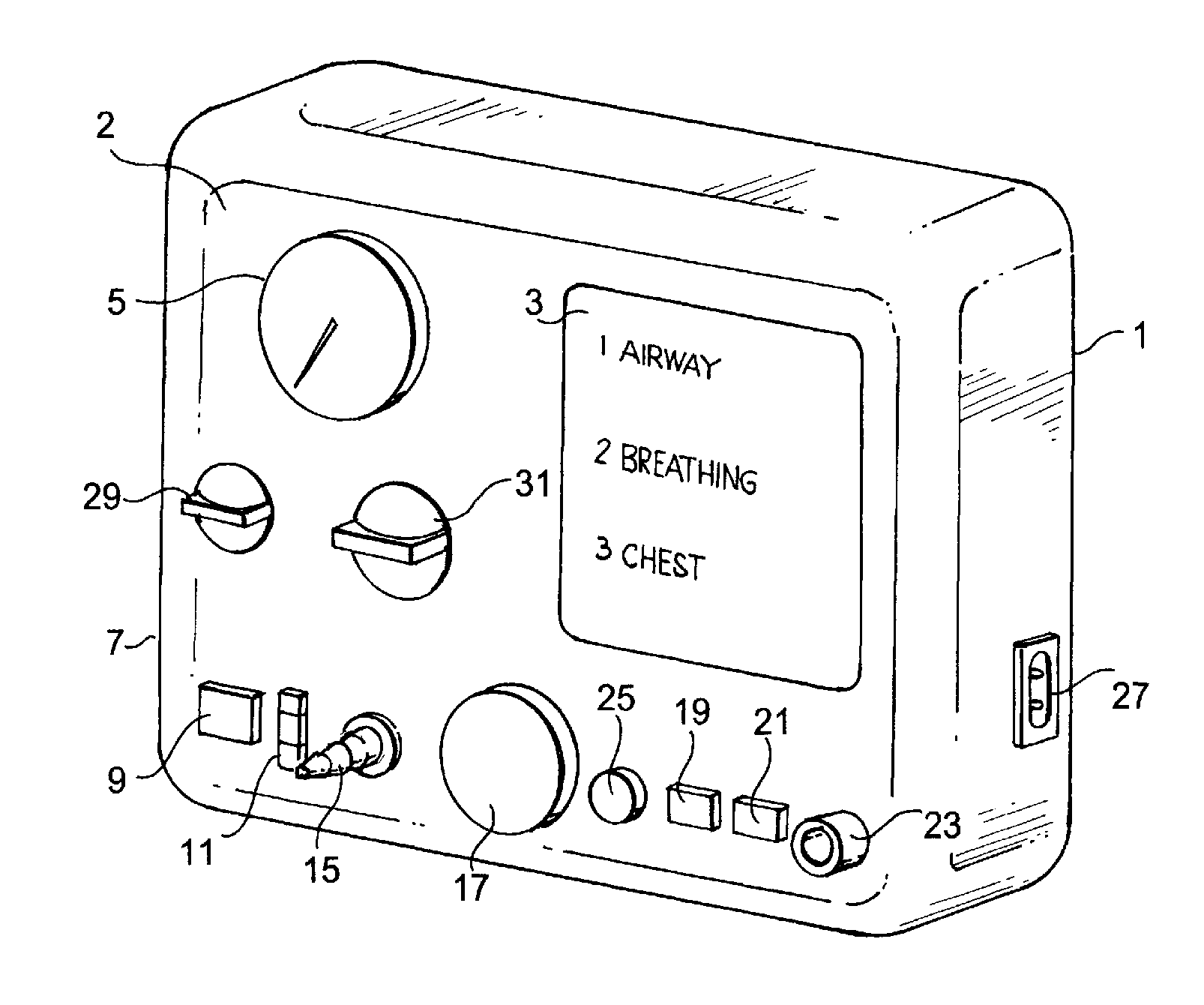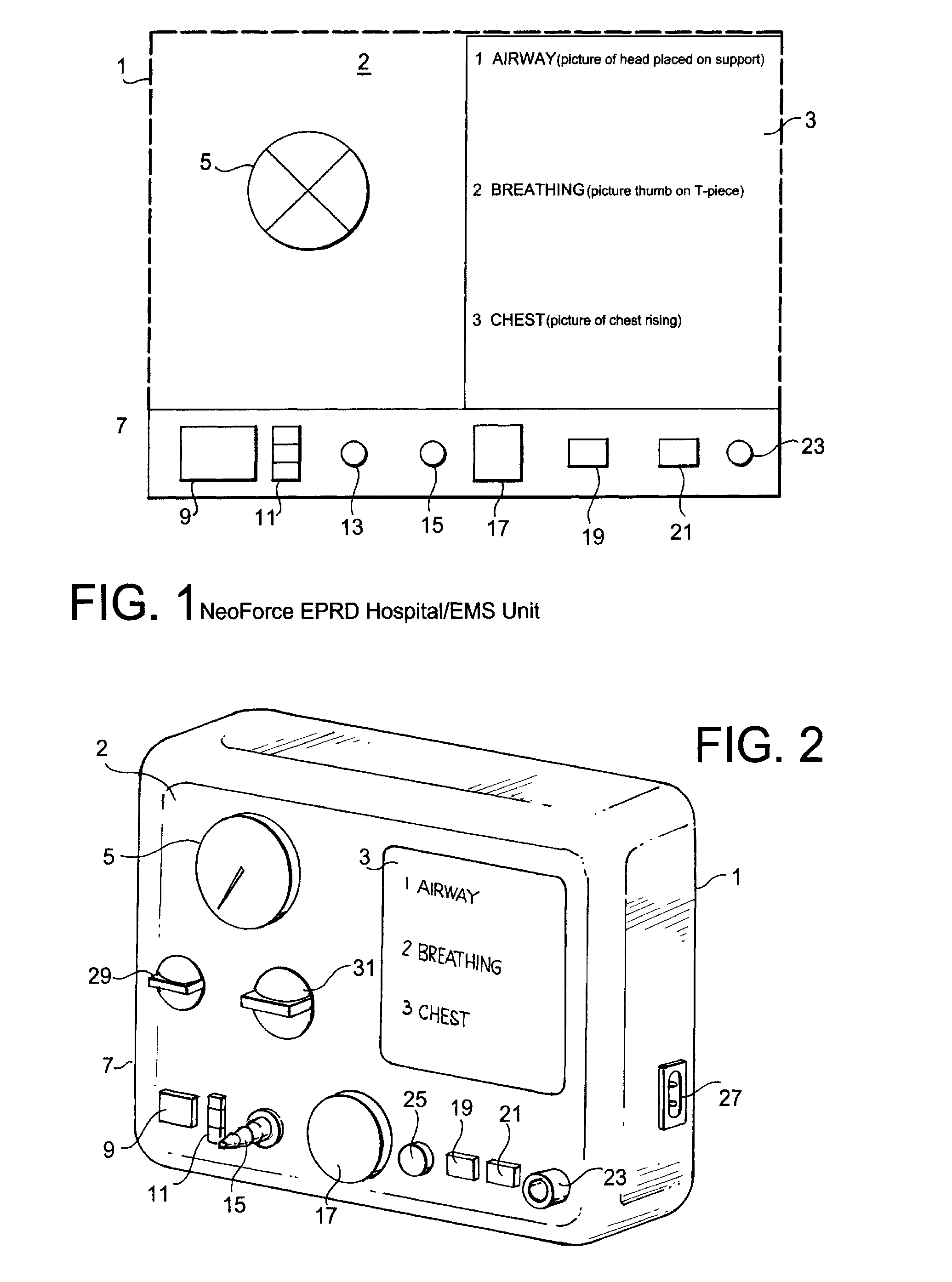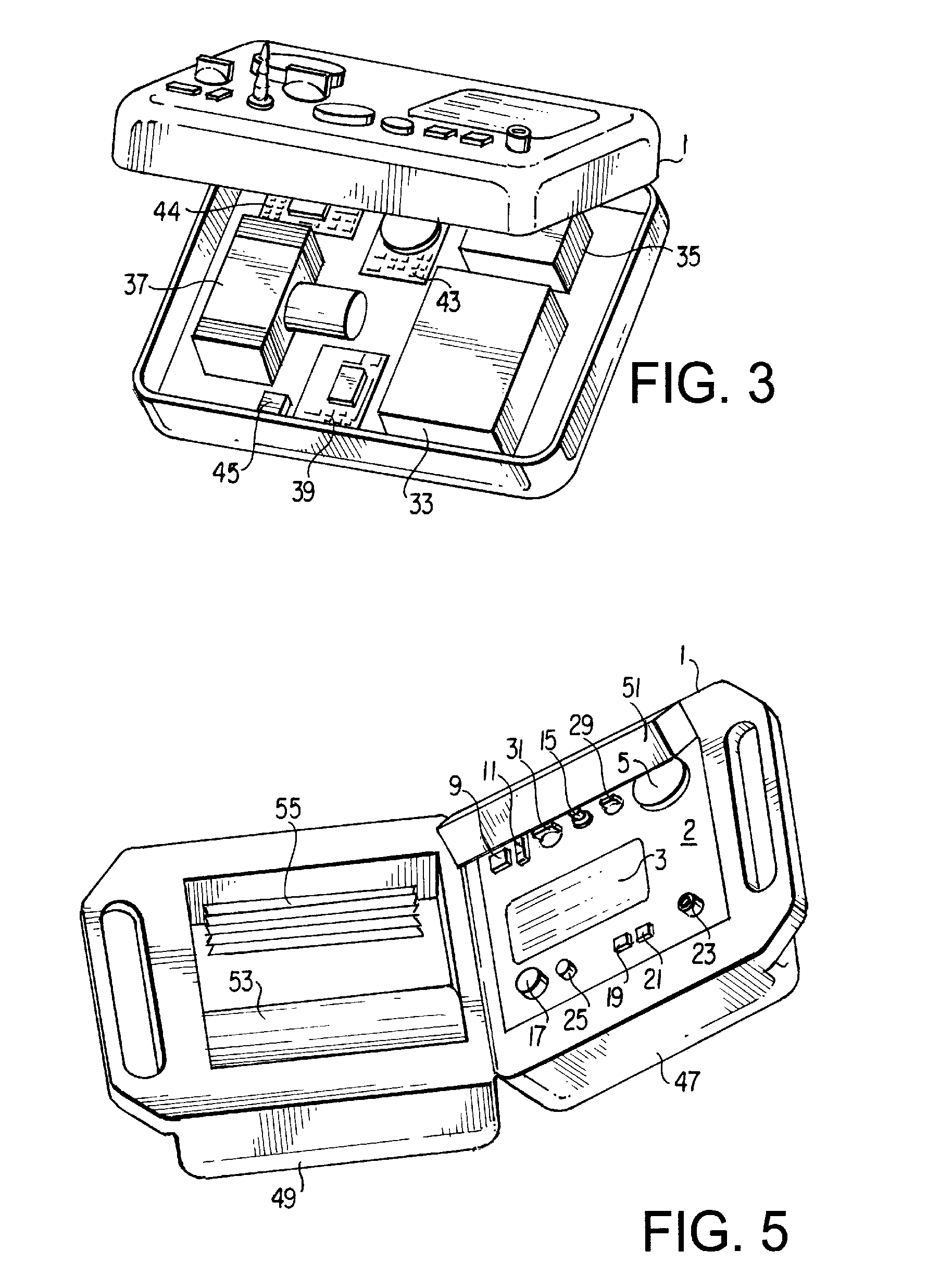Emergency pulmonary resuscitation device
a pulmonary resuscitation and emergency technology, applied in the direction of respirators, operating means/releasing devices for valves, therapy, etc., can solve the problems of difficult to effectively perform for extended periods of time, experienced medical personnel, and difficulty in delivering consistent breaths using mouth-to, so as to achieve the effect of high accuracy and reproducibility
- Summary
- Abstract
- Description
- Claims
- Application Information
AI Technical Summary
Benefits of technology
Problems solved by technology
Method used
Image
Examples
Embodiment Construction
[0029]The present invention is a emergency pulmonary resuscitation device designed (EPRD) to allow a user to easily deliver accurate and highly reproducible emergency breathing. The EPRD of the present invention preferably has simple controls that allow for control of delivery of emergency breaths through the action of a single finger. The easy and accurate control provided by the EPRD allows for consistent delivery of emergency breaths over extended periods of time without causing user fatigue.
[0030]The general term emergency breathing is used throughout this specification to describe the delivery of air to the airway of a person. Emergency breathing may be provided on its own, or as part of a standard CPR protocol, as will be described. Emergency breathing is typically required in situations where a patient is not breathing at all or not breathing normally, but there may be other situations when emergency breathing is required.
[0031]The EPRD of the present invention is configured ...
PUM
 Login to View More
Login to View More Abstract
Description
Claims
Application Information
 Login to View More
Login to View More - R&D
- Intellectual Property
- Life Sciences
- Materials
- Tech Scout
- Unparalleled Data Quality
- Higher Quality Content
- 60% Fewer Hallucinations
Browse by: Latest US Patents, China's latest patents, Technical Efficacy Thesaurus, Application Domain, Technology Topic, Popular Technical Reports.
© 2025 PatSnap. All rights reserved.Legal|Privacy policy|Modern Slavery Act Transparency Statement|Sitemap|About US| Contact US: help@patsnap.com



